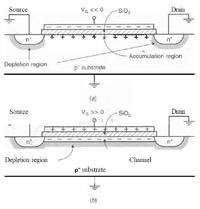maalma
Member level 1
hello all,
i have some trouble in understanding the subthershold conduction, we are bellow Vt but we have a conduction?? can you please give me more details?
what is the difference between weak inversion and strong inversion?? how can we explain it??
i have some trouble in understanding the subthershold conduction, we are bellow Vt but we have a conduction?? can you please give me more details?
what is the difference between weak inversion and strong inversion?? how can we explain it??
